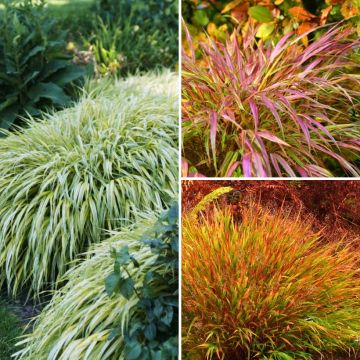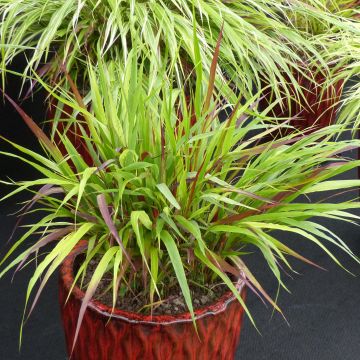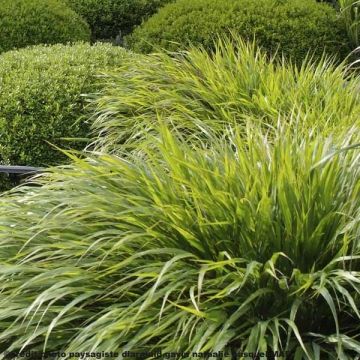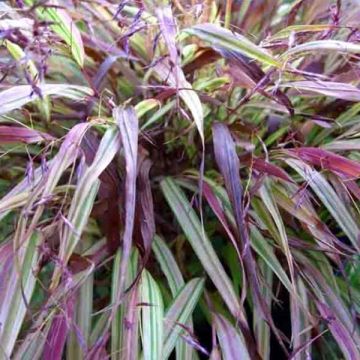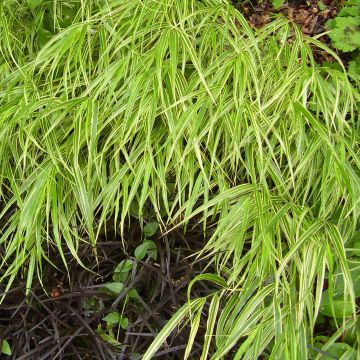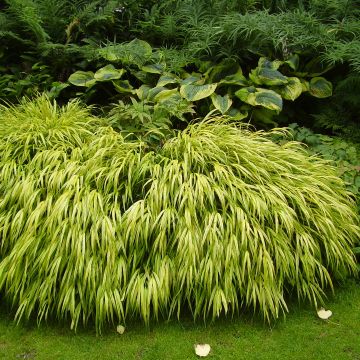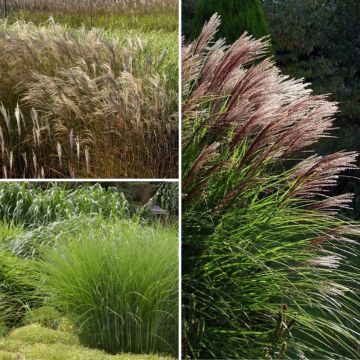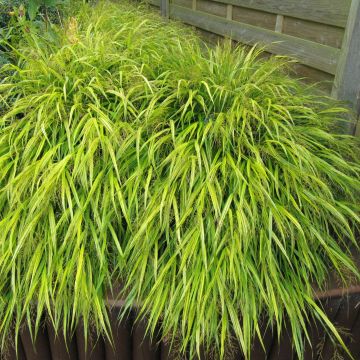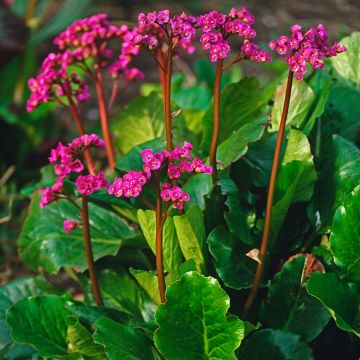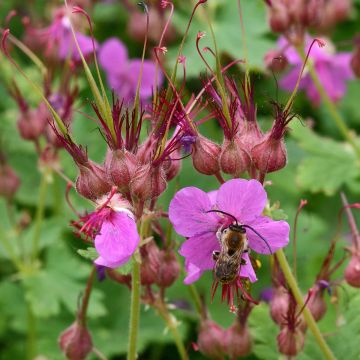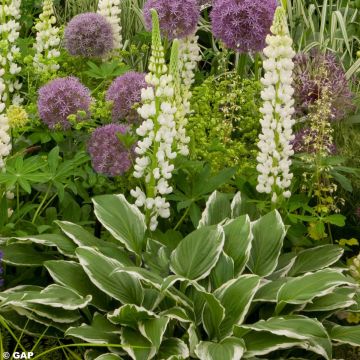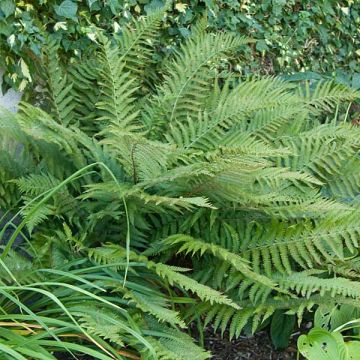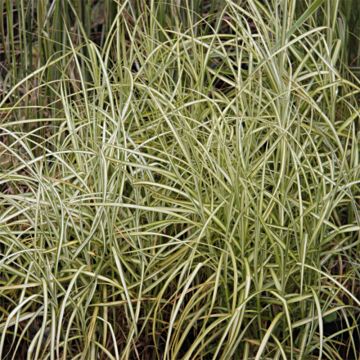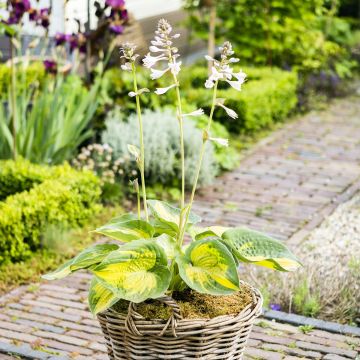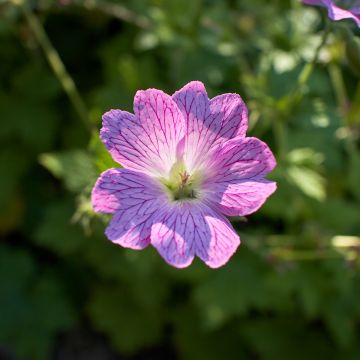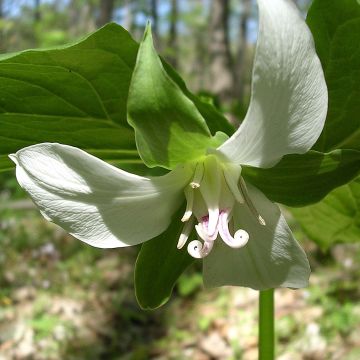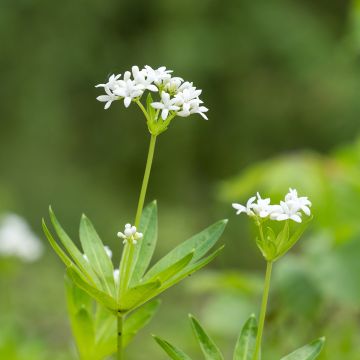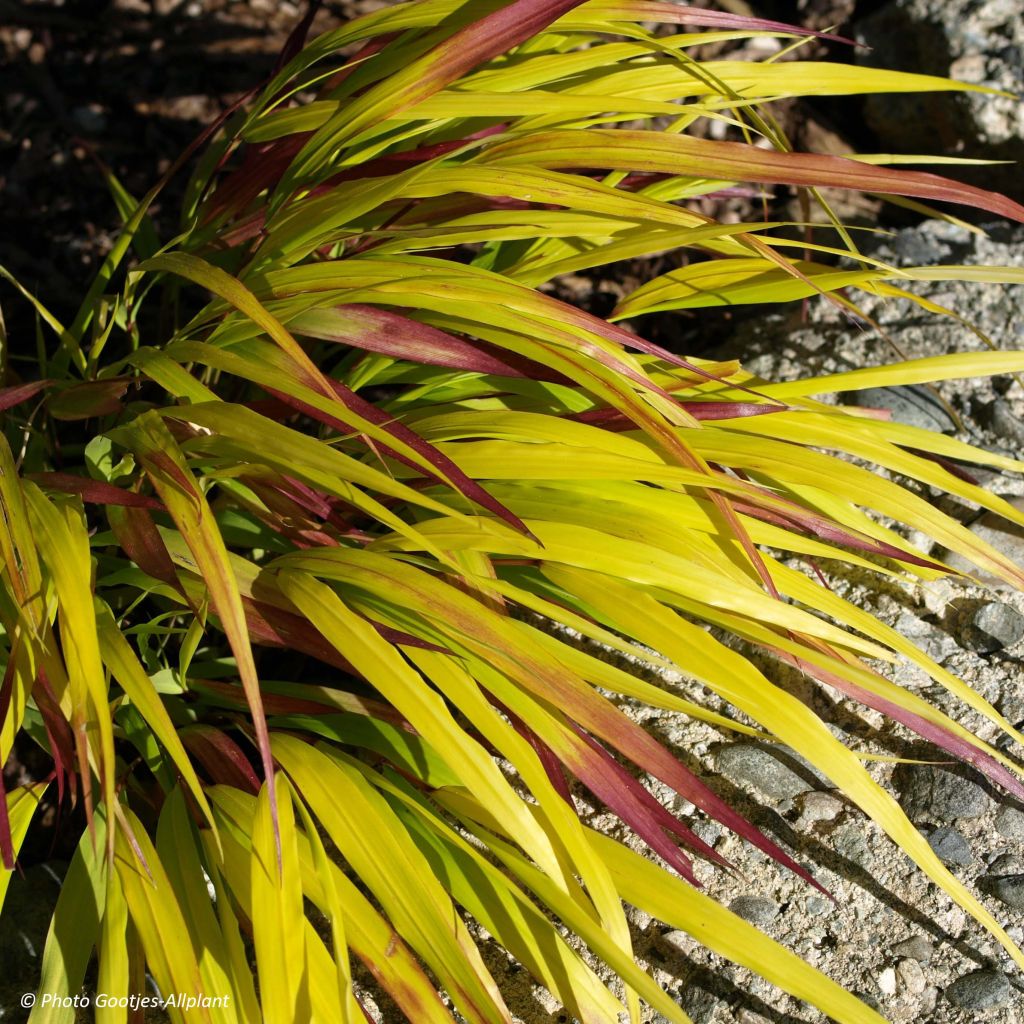

Hakonechloa macra Sunflare - Japanese Forest Grass
Hakonechloa macra Sunflare - Japanese Forest Grass
Hakonechloa macra Sunflare
Japanese Forest Grass
This item cannot be shipped to the selected country
Delivery charge from €5.90
Delivery charge from €5.90
More information
Schedule delivery date,
and select date in basket
This plant carries a 12 months recovery warranty
More information
We guarantee the quality of our plants for a full growing cycle, and will replace at our expense any plant that fails to recover under normal climatic and planting conditions.
From €5.90 for pickup delivery and €6.90 for home delivery
Express home delivery from €8.90.
From €5.90 for pickup delivery and €6.90 for home delivery
Express home delivery from €8.90.
Does this plant fit my garden?
Set up your Plantfit profile →
Description
The Hakonechloa macra 'Sunflare' is a recent variety of Japanese grass, a beautiful improvement of the All Gold cultivar with golden foliage. This perennial grass compensates for its modest size with a magnificently architectural habit, both flexible, spreading, and rounded, and its autumn foliage where chartreuse yellow, gold, burnt orange, red, and purple blend randomly. This hardy plant slowly forms a magnificent ground cover that produces an astonishing effect of mass, colour, and movement under the caress of the wind. Plant it in a clear understory, in a large border, or even in pots in dappled sun.
The Hakonechloa macra is a rhizomatous and stoloniferous grass belonging to the poaceae family, native to the mountains of Japan. The 'Sunflare' variety, from which it originates, is a recent Canadian breeding. The plant forms a clump 40-45 cm (16-18in) tall and 50 cm (20in) wide, composed of very leafy culms, initially upright, then trailing, evoking superimposed cascades and giving a very distinctive aspect to the plant. Its growth is rather slow, and the foliage is deciduous. The wide deciduous leaves of this grass, initially chartreuse green, gradually take on a more yellow colour, and are sometimes tinted with gold and red from summer if the plant is exposed to more sunlight. In late summer and autumn, gold nuances, orange tones, and increasingly intense red appear, turning purple at the end of the season. The flowers, arranged in thin spikelets, do not offer any real interest but can be preserved for winter.
Magnificent in a mass planting, Hakonechloa has become a highly trendy plant in recent years. This 'Sunflare' variety is also very easily grown in a pot and will find a special place in a partially shaded area of the terrace alongside hostas, ferns, bergenias, or heucheras, which are equally easy and tolerate the same growing conditions. This grass tolerates all exposures as long as the soil remains moist, for example on the banks of a pond. Nevertheless, it will give its best when used as a large ground cover in the shaded parts of the garden, in a clear understory, against an east-facing wall, or to border a bed of bushes in humus-rich and moist soil, to which it adds roundness and colour.
Report an error about the product description
Hakonechloa macra Sunflare - Japanese Forest Grass in pictures
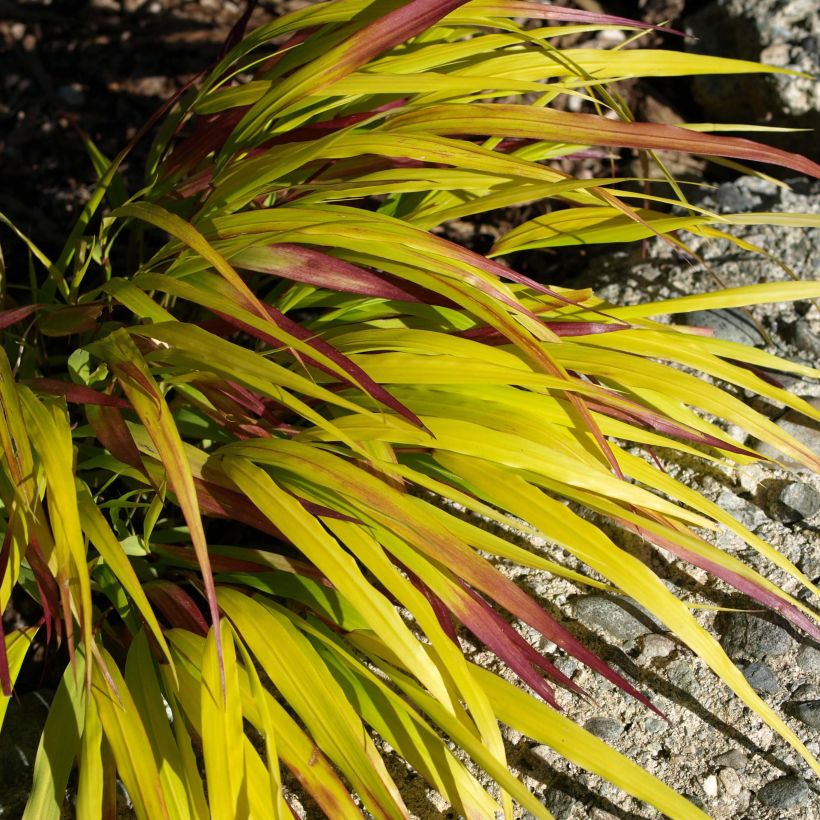

Flowering
Foliage
Plant habit
Botanical data
Hakonechloa
macra
Sunflare
Poaceae
Japanese Forest Grass
Cultivar or hybrid
Other Hakonechloa
Planting and care
Hakonechloa macra 'Sunflare' appreciates a cool to moist, but well-drained, acidic, neutral or even slightly calcareous soil. Tolerant to exposure, it can withstand shade and accept sunlight in cool stony soil. A spring fertilizer application stimulates the growth of new foliage. Prune your plant in late February before the new leaves emerge. For pot cultivation, make sure to water regularly. It is often useful to add a water retainer like stockosorb to the potting soil.
Somewhat capricious, these plants sometimes spread very well through vigorous rhizomes that appreciate fertile and warm soils. They prefer constant humidity and filtered light. However, they fear dry soils and strong winds.
Planting period
Intended location
Care
-
, onOrder confirmed
Reply from on Promesse de fleurs
Shade-loving perennials
Haven't found what you were looking for?
Hardiness is the lowest winter temperature a plant can endure without suffering serious damage or even dying. However, hardiness is affected by location (a sheltered area, such as a patio), protection (winter cover) and soil type (hardiness is improved by well-drained soil).

Photo Sharing Terms & Conditions
In order to encourage gardeners to interact and share their experiences, Promesse de fleurs offers various media enabling content to be uploaded onto its Site - in particular via the ‘Photo sharing’ module.
The User agrees to refrain from:
- Posting any content that is illegal, prejudicial, insulting, racist, inciteful to hatred, revisionist, contrary to public decency, that infringes on privacy or on the privacy rights of third parties, in particular the publicity rights of persons and goods, intellectual property rights, or the right to privacy.
- Submitting content on behalf of a third party;
- Impersonate the identity of a third party and/or publish any personal information about a third party;
In general, the User undertakes to refrain from any unethical behaviour.
All Content (in particular text, comments, files, images, photos, videos, creative works, etc.), which may be subject to property or intellectual property rights, image or other private rights, shall remain the property of the User, subject to the limited rights granted by the terms of the licence granted by Promesse de fleurs as stated below. Users are at liberty to publish or not to publish such Content on the Site, notably via the ‘Photo Sharing’ facility, and accept that this Content shall be made public and freely accessible, notably on the Internet.
Users further acknowledge, undertake to have ,and guarantee that they hold all necessary rights and permissions to publish such material on the Site, in particular with regard to the legislation in force pertaining to any privacy, property, intellectual property, image, or contractual rights, or rights of any other nature. By publishing such Content on the Site, Users acknowledge accepting full liability as publishers of the Content within the meaning of the law, and grant Promesse de fleurs, free of charge, an inclusive, worldwide licence for the said Content for the entire duration of its publication, including all reproduction, representation, up/downloading, displaying, performing, transmission, and storage rights.
Users also grant permission for their name to be linked to the Content and accept that this link may not always be made available.
By engaging in posting material, Users consent to their Content becoming automatically accessible on the Internet, in particular on other sites and/or blogs and/or web pages of the Promesse de fleurs site, including in particular social pages and the Promesse de fleurs catalogue.
Users may secure the removal of entrusted content free of charge by issuing a simple request via our contact form.
The flowering period indicated on our website applies to countries and regions located in USDA zone 8 (France, the United Kingdom, Ireland, the Netherlands, etc.)
It will vary according to where you live:
- In zones 9 to 10 (Italy, Spain, Greece, etc.), flowering will occur about 2 to 4 weeks earlier.
- In zones 6 to 7 (Germany, Poland, Slovenia, and lower mountainous regions), flowering will be delayed by 2 to 3 weeks.
- In zone 5 (Central Europe, Scandinavia), blooming will be delayed by 3 to 5 weeks.
In temperate climates, pruning of spring-flowering shrubs (forsythia, spireas, etc.) should be done just after flowering.
Pruning of summer-flowering shrubs (Indian Lilac, Perovskia, etc.) can be done in winter or spring.
In cold regions as well as with frost-sensitive plants, avoid pruning too early when severe frosts may still occur.
The planting period indicated on our website applies to countries and regions located in USDA zone 8 (France, United Kingdom, Ireland, Netherlands).
It will vary according to where you live:
- In Mediterranean zones (Marseille, Madrid, Milan, etc.), autumn and winter are the best planting periods.
- In continental zones (Strasbourg, Munich, Vienna, etc.), delay planting by 2 to 3 weeks in spring and bring it forward by 2 to 4 weeks in autumn.
- In mountainous regions (the Alps, Pyrenees, Carpathians, etc.), it is best to plant in late spring (May-June) or late summer (August-September).
The harvesting period indicated on our website applies to countries and regions in USDA zone 8 (France, England, Ireland, the Netherlands).
In colder areas (Scandinavia, Poland, Austria...) fruit and vegetable harvests are likely to be delayed by 3-4 weeks.
In warmer areas (Italy, Spain, Greece, etc.), harvesting will probably take place earlier, depending on weather conditions.
The sowing periods indicated on our website apply to countries and regions within USDA Zone 8 (France, UK, Ireland, Netherlands).
In colder areas (Scandinavia, Poland, Austria...), delay any outdoor sowing by 3-4 weeks, or sow under glass.
In warmer climes (Italy, Spain, Greece, etc.), bring outdoor sowing forward by a few weeks.

































